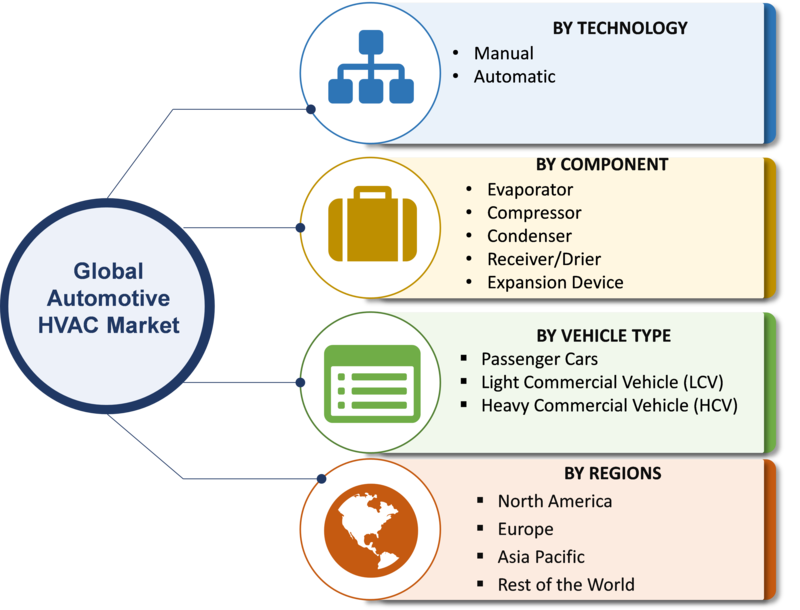Do Leather Repair Kits Really Work?admin2021-01-08T09:46:17-08:00
The old adage…”you get what you pay for” is certainly true when it comes to leather repair. The quick answer to that question is, some products do work, most don’t. Yep, that’s the truth. There are really only a few companies on the Internet that sell genuine “professional” leather repair kits and restoration products. The rest are just making a quick buck, selling cheap, inferior products and making claims that simply are not true. Unsuspecting customers wind up wasting money on this junk. We hear this same story over and over again from customers.
You’ll find no shortage of quick-fix repair kits on Amazon, Ebay, Etsy or Facebook. Facebook is littered with videos of many of these types of products, misleading you into thinking that you can professionally repair just about any kind of damage with a tiny tube of colored gel .
Again, that’s simply not true. It would be nice if it were. Most of these products are manufactured in China and are essentially the same, if not the exact same product, they’re just packaged differently and sold under a variety of different names.
Then there are “balms” that claim that they “Recolor, Renew, Repair & Restore Aged, Faded, Cracked, Peeling”. They DO NOT. At best, they condition leather. We’ve heard several complaints that if the area treated with these types of balms gets wet, the color comes off. Not good.
Unfortunately, the Internet is so saturated with leather repair kits, how are you to know which one to choose? Well that really depends on your expectations. Do you want a long lasting, invisible repair or will you be satisfied with a mediocre repair that’s temporary and may look just as bad, if not worse, than what you started with?
(No specific brand or seller)
Photoshopped photos like this one are all over the Internet. We actually were the first to ever show the comparison like this over 20 years ago. Here’s the original and it’s not photoshopped, it’s the real deal. These fly-by-night companies need to stoop to photoshopping images to try to claim that their products will do the same. This photo is a classic example of false advertising. They couldn’t even fake it very well, the two sides don’t even line up.
Here’s the original and it’s not photoshopped, it’s the real deal. These fly-by-night companies need to stoop to photoshopping images to try to claim that their products will do the same. This photo is a classic example of false advertising. They couldn’t even fake it very well, the two sides don’t even line up.
There is no way that a 20 ml (less than 1 oz) of any product much less a gel or balm would achieve this result.
By all means, if you don’t expect much from a repair product and don’t care how it looks when complete, then one of these may be fine for your project. We suggest that you look at our reviews page to see the kind of damage you can repair using our products. Our photos are real customer photos and not photoshopped.
Magic Mender products:
 Our Color Flex is the same polyurethane coating used on new furniture and autos. Please don’t be misled, NONE of the products found on the Internet, other than for aniline leather, are “dye”. They are all coatings.
Our Color Flex is the same polyurethane coating used on new furniture and autos. Please don’t be misled, NONE of the products found on the Internet, other than for aniline leather, are “dye”. They are all coatings.We are the most experienced and trusted, for 40+ years — 25 years on the Internet.
See our full list of products here.
:)all countries
Country
All countries
Radius
Legal form
Legal status
Search keywords
Industry segment Standard
Learn more about the North Data Premium Service
Global Smart Repair SL, Bormujos, Spain
Global Smart Repairs Ltd. , Orpington, United Kingdom
, Orpington, United Kingdom
Global + SAS, Gémenos, France
Global Repair SAS, Paris, France
Global Repairs Ltd., St. Albans, United Kingdom
Global Star Repair SAS, Montpellier, France
Global Sash Repairs SL, Sant Quirze del Vallès, Spain
Billington Repairs Ltd., Stafford, United Kingdom
Orpington First Ltd., Orpington, United Kingdom
Smartrepairs SAS, St. Ay, France
Smart Repair SAS, Crach, France
S2 Kensington Repairs Ltd., London, United Kingdom
Global Repair' SAS, Breuil-le-Sec, France✝︎
GM Global Repairs Ltd., Coventry, United Kingdom✝︎
Irepairsmart SAS, Paris, France✝︎
15 results of 5,119 total.
Show more results ►
You are planning to install a smart home system. Now you are storming Yandex Market, local stores and experts to find the right kit. It turns out that there are smart devices for 3000r. And others - for 3,000,000 rubles. How do some smart home systems differ from others? We will look at what smart homes are.
Wired or cable smart homes are the oldest form of home automation. They are called wired because all commands inside a smart home are transmitted over wires, and not over a radio channel. Only a smartphone as a remote control in the hands of the wireless host.
 A house with a wired system is responsive: as soon as you give an order, you immediately see that he began to carry them out. This is not only a pleasant psychological effect. Seeing no result, the hosts re-order, and if the command bus is slow, the system may hang.
A house with a wired system is responsive: as soon as you give an order, you immediately see that he began to carry them out. This is not only a pleasant psychological effect. Seeing no result, the hosts re-order, and if the command bus is slow, the system may hang. There is only one drawback, but a global one: wired systems are difficult to install. A number of consequences follow from this.

ABB, Legrand, Larnitech, HDL
Wired automation system is the best option for those who are just building or starting a major renovation.
Wireless Smart Homes “communicate” over a radio channel, not over a laid cable.

Xiaomi, Fibaro, Zipato, Life Control, Rostelecom
are smart home controllers, in which smart main controllers are controlled. This is a special computer to which equipment is connected by wire or wirelessly. Its task is to receive and process signals from sensors, such as sensors, switches, and issue commands to actuators.
Its task is to receive and process signals from sensors, such as sensors, switches, and issue commands to actuators.
One device controls everything - it's simple, clear and convenient. Otherwise, each actuator and sensor would have to be programmed separately.
The safety margin of smart homes with centralized control is lower than that of decentralized ones. When the controller is disconnected or broken, the house ceases to be smart. Another disadvantage is the price. Since the controller is a high-tech device, it cannot be cheap. On the other hand, actuators and sensors are relatively inexpensive. But you have to change the power supplies of each wireless module.
Control4, Fibaro, Zipato, Apple Hone kit, Google Chrome
Centralized smart home systems - powerful, convenient, with great integration of various equipment. To reduce the likelihood of failures, you need to provide uninterrupted power.
Decentralized smart homes do not have a controller that receives and processes information and then issues orders. In decentralized systems, each sensor is a small computer with a processor, memory and programmable logic.
Wired - KNX, ABB free@home, HDL, Larnitech
The smart home system is an integrated control device for all engineering networks. Thanks to modern technologies, with the help of which engineering systems are created, it is possible to combine them using a single control center. If you do not know how to make a “smart home” with your own hands and configure its operation in the most efficient way, you can familiarize yourself with a detailed description of the features of the system using instructions and videos posted on the Internet.
Thanks to modern technologies, with the help of which engineering systems are created, it is possible to combine them using a single control center. If you do not know how to make a “smart home” with your own hands and configure its operation in the most efficient way, you can familiarize yourself with a detailed description of the features of the system using instructions and videos posted on the Internet.
The main advantages of using the “ smart home ” system include the following:
These are just the main advantages of the "smart home" system, which also include ease of use, high image level, the ability to monitor what is happening even at the moment of absence (using video taken by cameras).
The structure of the smart home is quite simple, but it allows you to cover the maximum number of necessary objects (sensors and cameras are used to shoot video). To effectively equip a "smart home", the scheme should look like this:
The most popular among consumers is the control unit for light and electrical loads. This function allows not only to turn off the lighting in all rooms at the same time, but also to bring the level of illumination to the required value (minimum, average, maximum).
Controlling the climate in your home allows you to get the desired temperature by setting the system once. In the future, the "smart home" will independently regulate the operation of engineering subsystems to create a favorable microclimate.
Burglar alarm provides protection against penetration into the local area, as well as directly into the house itself through windows and doors. In order for this system to function more smoothly, cameras are installed around the entire perimeter that record video around the clock. The entertainment system involves watching videos in equipped rooms, as well as listening to your favorite audio in all areas of the home.
To control the weather and watering plants, it is necessary to install a local weather station that will inform residents about such indicators:
If the level of precipitation is below the standard value, the smart home will be able to turn on the irrigation system.
What can be gained if you know how to make a smart home with your own hands:
To install a "smart home" system, you can purchase it ready-made or read the instructions located on the Internet (video, text), which describe how to make a "smart home" with your own hands.
What you need to do to create a smart home system with your own hands:
Before you start creating a "smart home", you must select a central control unit (preferably a computer). This device will help ensure the versatility and ease of use of the system. With the help of a computer, you can perform a large number of diverse tasks within the same system, as well as small subsystems. Thanks to the development of modern equipment, as well as equipping it with the most common protocols, the integration of subsystems into a single "smart home" system becomes very simple.
This device will help ensure the versatility and ease of use of the system. With the help of a computer, you can perform a large number of diverse tasks within the same system, as well as small subsystems. Thanks to the development of modern equipment, as well as equipping it with the most common protocols, the integration of subsystems into a single "smart home" system becomes very simple.
Once you have decided on the control device, you need to connect cameras to it that provide video recording to increase the safety of residents. After such procedures, you can connect to video surveillance using a remote desktop, even without being at home. In addition to cameras, it is necessary to connect an alarm system and special sensors.
You can also connect 1-wire sensors to the server, with which you can automate the switching on and off of house lighting depending on climatic conditions; the information obtained can be used to control the temperature inside an apartment or house.